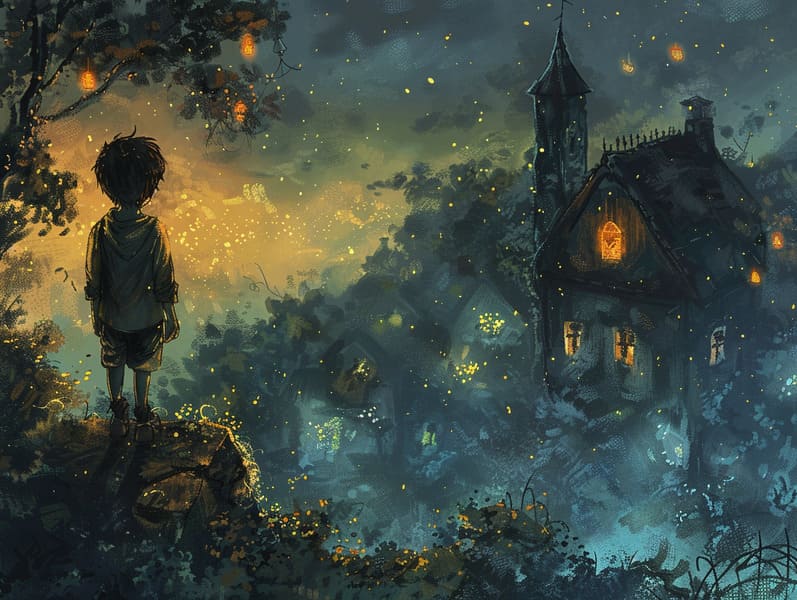The Rise of Fairy Tales and Its Everlasting Magic.
The Rise of Fairy Tales and Its Everlasting Magic.
Blog Article

Legendary fairy tales have historical significance. These narratives have been spoken from one generation to the next far before they were ever written down. They emerged from a variety of traditions, including American traditions. They were initially shared among mature audiences, often carrying themes and messages mirroring the societal norms and beliefs of the time.
Jacob and Wilhelm Grimm, Jacob and Wilhelm (the Grimm brothers), were among the first to compile and release many of these beloved tales. Their compilation, "Grimm's Fables," included classics like "The True Bride," "Little Brother and Little Sister," and "Snow-White and Rose-Red," which have since become classics in the world of timeless fairy tales. Similarly, H. C. Andersen's enchanting fairy tales, such as "The Little Mermaid," and "The Little Duckling," have touched hearts worldwide, securing their place in the pantheon of beloved fairy tales.
Despite being ancient, these stories remain as applicable as ever, especially as nighttime stories for kids. These fantastical tales are now available in numerous formats, including richly illustrated books, whimsical animations, and digital storybooks.
Their persistent charm can be credited to several fascinating points:
Key Lessons: Ancient fairy tales often impart important moral lessons. Narratives like "The Tale of the Boy Who Cried Wolf" teach the virtue of being truthful, while "The Story of the Tortoise and the Hare" point out the merits of perseverance and humbleness. These tales offer young readers clear distinctions between virtue and vice, forming their moral compass in a kind yet lasting way.
Compassion and Knowledge: Classic fairy tales frequently include individuals facing challenges and struggles, urging audiences to identify with their struggles and encourage their triumphs. For instance, "Beauty and the Beast" teaches us the virtue of appreciating inner worth to appreciate the inner spirit of a individual, encouraging sympathy and comprehension.
Cultural Understanding: Many traditional fairy tales are imbued with the cultural contexts from which they blossomed. Reading these stories can provide enlightening views into different customs, developing a sense of world awareness and knowledge.
Fantasy and Imagination: The mythical elements in ancient fairy tales—enchanted forests—awaken children’s visions and dreams. These narratives move readers to supernatural realms, inspiring creative ideas and a sense of astonishment that continues a lifetime.
Traditional fairy tales are not only entrancing but also educational. They function as enchanted tools in promoting various mental and emotional abilities in young readers. When classic fairy tales are voiced, they improve language development by introducing new language items and sophisticated sentence structures. This practice also enhances auditory skills and attention span, as children listen intently, excited to see what happens next.
Furthermore, contemplating the themes and characters of ancient fairy tales can nurture reasoning skills and thinking skills. Children are educated to find patterns, foresee events, and catch on to cause and effect. These explorations also boost young ones speak out their thoughts and feelings, contributing to their emotional intelligence.
In today’s technological era, the proliferation of digital storybooks has made these fairy tales more reachable than ever. Digital sites and programs present extensive collections of traditional fairy tales that can be read or listened to anytime, anywhere. Fairy tales recited are particularly sought after, providing an engaging way for young ones to be a part of these mesmerizing stories. read more Read-aloud books and read-to-me stories move characters and settings to life, often supported by whimsical audio effects and background music that intensify the tale-telling adventure.
The timeless charm of old fairy tales lies in their ability to transform to present eras while retaining their main lessons. Contemporary renditions of these tales often feature more inclusive figures and modern settings, making them meaningful to today’s audience. However, the core values of bravery, empathy, and truth remain unchanged, continuing to connect with young listeners of all ages.
Fairy tales also offer a sense of serenity and familiarity. They offer a well-structured narrative with a unmistakable beginning, middle, and end, often winding up with the conclusion of conflicts and the triumph of right over wrong. This consistency can be relieving for the young, making known a sense of steadfastness in an unstable world.
Classic fairy tales continue to entrance and train new generations, maintaining their magic and significance in modern society. As kids' bedtime tales, they share a perfect blend of magic and knowledge, developing moral values, empathy, and creativity. The prevalence of online storybooks and the well-received status of fairy tales recited make sure that these classic narratives remain attainable to new generations.
By continuing and telling these tales, we continue to commemorate the rich tapestry of lore and cultural heritage. Whether you are enjoying a gorgeously illustrated book, exploring a virtual collection, or hearing an voice book, the appeal of children's fairy tales is always within reach. These fairy tales point out of the immortal presence of storytelling and its ability to bring us together across centuries and lands.
Even if you are accessing a beautifully illustrated book, seeing a web-based library, or listening to an sound book, the magic of traditional fairy tales is always within reach.
These stories show us of the eternal spell of tales and its ability to unify us across centuries and lands, creating a bond that captivates and teaches alike.